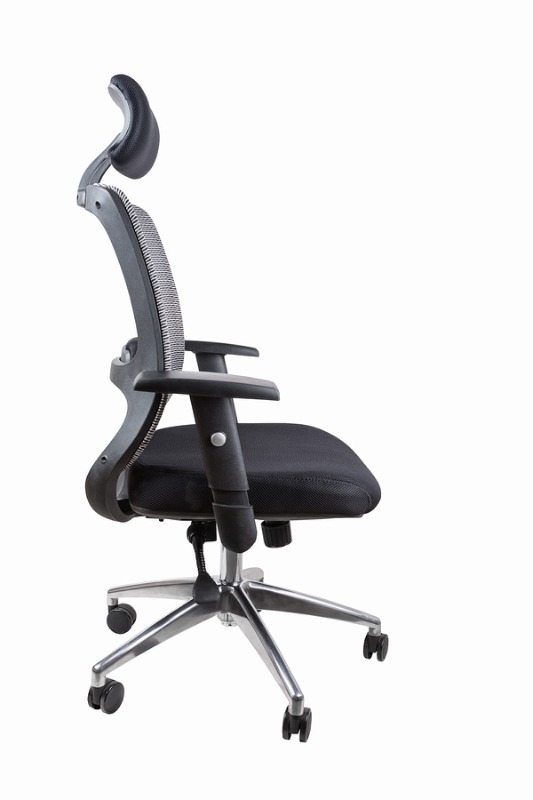Sixty Seven percent of people in Briton spend 20 hours a day either sitting down or lying down and 54% of those think they have an active lifestyle. We are getting more and more sedentary but believe we are active because we have busy lives, constantly checking our emails (apparently the average person deals with 121 emails a day), and phones and driving here, there and everywhere.
We all know we should be moving more and have to make the effort and have the discipline to do so but if you do have to sit at your desk then read on to discover how to set things up correctly.
Is it all about the chair?

An office chair is like a pair of shoes. It’s got to be fit for purpose and fit you. You wouldn’t go hiking up Mount Everest in flip flops or go do the weekly shopping in your slippers or waders. Even if you have the best, all singing all dancing trainers for running a marathon your feet will still get sore if you run too many miles in them and we all sit at our desks longer than it would take to climb Mount Everest.
So just like the shoes, the chair has to be suitable for what you need it to do. Ideally think about how much time you realistically spend sitting down and is all of that time in your very own office chair? You might hot desk and move around from chair to chair, or sit in meetings, conferences or work from home 2 days a week where the set up is different. Having one snazzy ergonomic chair which you really only spend half your time in might help but it’s only half the picture. Suitable chairs can make a big difference but reducing the amount of time you spend sitting down is far more important and also remember that you can still sit badly in a good chair so it’s definitely not all about the chair.
What about the desk?

The desk can make a big difference and is very often over looked. You’ll have figured out by now that the amount of time sitting down is the big issue so reducing your time sitting is the solution.
A sit-stand desk solves this problem. You can’t stand all day long but ideally we shouldn’t sit all day long either. Having the ability to go from one to the other is a tremendous help. This can be practically difficult if your desk is fixed to a wall or shared with others who don’t necessarily want to stand at the same time as you. You can look at standing at a windowsill for a bit if you are reading a document and don’t need to use your computer. You could get one of those tall coffee tables you see in cafes in the corner of the office to stand at with your lap top or a platform that sits on your desk to bring everything up to a standing height. There are always options.
It’s important to remember that the height of your own desk may be too low in the sitting position and raising this a few centimetres by putting a few brinks under the desk (not the most high tech solution) can mean your sitting taller and can get your chair in under the desk and feet comfortably on the floor. We are all different shapes and sizes. Some of us have long legs and shorter backs and vice versa so a standard one size fits all rarely does fit all so adjust it to fit you.
But all this equipment costs money

Yes it does. But so does sick pay, wages to employ temps to cover sickness absence, lost productivity, visits to the doctor and Physiotherapist to treat your back and neck pain. Equipment can’t guarantee you eliminate a risk but it will reduce it. We all as individuals are responsible for our own health and wellbeing so even with the correct equipment we can still be sloppy and sit badly or ignore the advice about breaks etc. but then you only have yourself to blame.
So how do I set up my chair?

There are a few simple guidelines to follow.
- Sit with your bottom right at the back of the seat so that you can rest your back against the chair for support.
- Rest your forearms on the desk with your elbows at a 90 degree angle.
- You should be sitting close enough to the desk to easily reach the keyboard so that your are hovering over the keys like playing a piano.
- You may need to adjust or remove the arm rests of the chair to allow you to get close enough to the desk.
- Relax your shoulders. Don’t allow them to round or elevate.
- Adjust the height of your chair so you can sit with your feet flat on the floor. You may need to use a foot stool if your legs are a bit short.
- Ideally your knees should be slightly lower than your hips.
- There should be approximately 3-4 fingers width of space between the back of your knee and the chair for adequate circulation.
- Do not cross your legs.
- Imagine there is a piece of string coming out of the top of your head like a puppet, attached to the ceiling to keep you up straight and prevent slouching.
- Adjust the lumbar support to fill in any gaps.




0 Comments